Reviews

PERUVIAN AMAZONIAN ART THROUGH THE HOCHSCHILD CORREA COLLECTION
The Hochschild Correa Collection boasts of being the most complete private collection of contemporary art from the Peruvian Amazon. Nevertheless, for more than a decade, it has been built on a varied and unrestricted collection, which has made it possible to bring together the different trends and techniques currently being used in the region, with a focus on dialogue and a certain relational patina among the works that make up the collection.
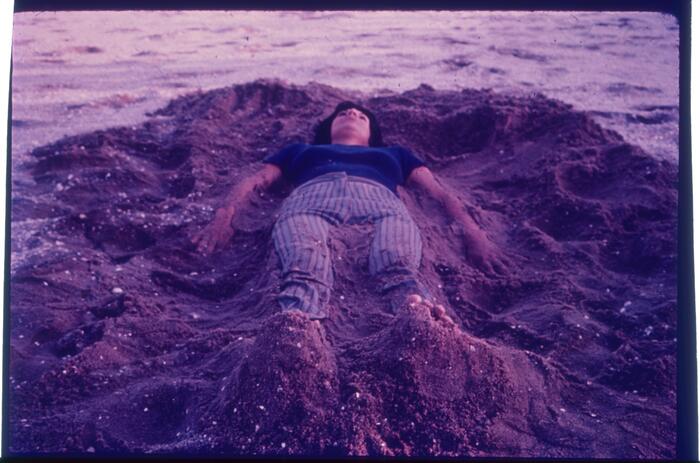
GEOGRAPHY OF SUBVERSION - ANNA BELLA GEIGER
About to turn 92, Anna Bella Geiger, from Rio de Janeiro, never ceases to attest to her robust experimental side with each new exhibition featuring snippets of her shifting production. Both in Brazil and abroad, in solo and group shows, her body of work remains indomitable, uncompromising and full of meaning.

LANGUAGE AND SOCIETY IN LÚA CODERCH'S WORK AT THE RYDER
The work that Lúa Coderch (Iquitos, Peru, 1982) has been doing around language takes over her recent solo show at Madrid's The Ryder Projects to consolidate a new relational vision of communicative practices. Exhausted and exuberant, title of this partially retrospective and almost thesis exhibition, also responds to the two apparently opposite moods, but with an inexorable link, of the vital needs that seep into contemporary society between individuals and a certain extimacy that, organically, seems to have been imposed.

GABRIEL O'SHEA'S HUMAN AND REALISTIC TECHNOLOGICAL FUTURE
Gabriel O'Shea (Metepec, Mexico, 1998) manages to delve into that huge and apparent dichotomy between the technological and the human (or the future and the real) in his most recent proposal at Hilario Galguera's Madrid headquarters, a series of paintings of high conceptual content that critically debate on several technical and thinking aspects.

EMPTINESS AND COLOR IN LÓPEZ-CHÁVEZ
Under the enlightening title of Los espacios del pánico (Estudios superficiales sobre el vacío y el color) (The spaces of panic-Surface studies on emptiness and color), the interesting individual exhibition that the Madrid gallery El Apartamento dedicates to Luis Enrique Lopez-Chavez (Manzanillo, Cuba, 1988) is developed as a thesis scenario for the almost scientific analysis that the Cuban artist has developed around the space of the void and the chromatic.
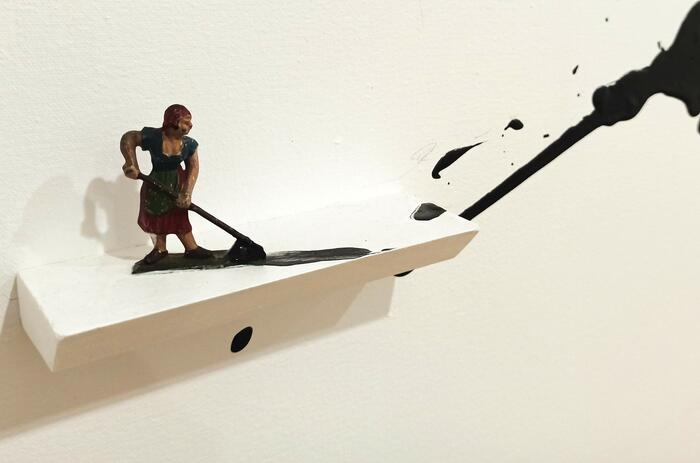
A COMPLETE OVERVIEW AT LILIANA PORTER
Museo Casa de la Moneda, in Madrid, celebrates in an exhibition the career of Liliana Porter (Buenos Aires, Argentina, 1941) through several conceptual key points of it, designing a necessary route to cover, in a succinct but very representative way, one of the most relevant productions of the last decades of conceptual art.

THE BRITTLE POSTCOLONIAL PROPOSAL OF GRADA KILOMBA
The Reina Sofia Museum presents in the exhibition Opera to a Black Venus a necessary journey to the work of Grada Kilomba (Lisbon, Portugal, 1968), forming the most complete exhibition of her work to date in Spain. The Portuguese artist presents a complete discourse, mainly expressed through the different languages of movement, from the body to performance, but without leaving aside other narrative and artistic techniques with which she analytically presents a certain introspective look at the world of history.

LITA CABELLUT IN DIALOGUE WITH GOYA
Goya's Los Disparates preceded, or marked, painting's entry into modernity. Beyond this historiographical note, the series by the Aragonese master captures with masterful imagery the vicissitudes of irony, sarcasm and the darkness of a reality that has lasted through time to the present day. The plates of his etchings become the surface that deposits this reality, and the result, once impregnated, works as a full reminder of the origin of our essence, our fears and our actions.
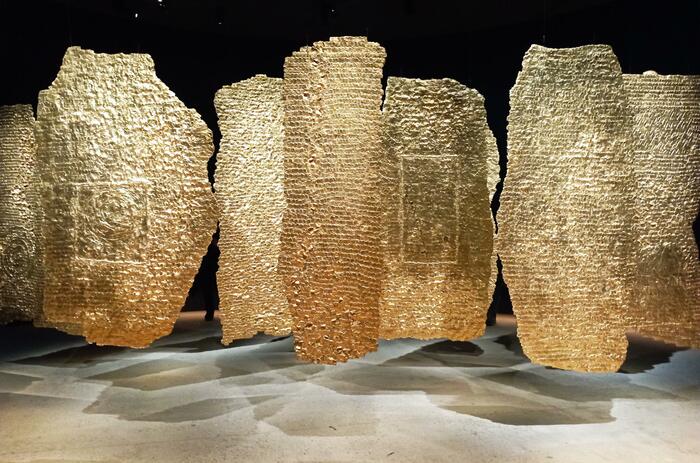
OLGA DE AMARAL AT FONDATION CARTIER POUR L'ART CONTEMPORAIN
Shocking and enigmatic, this is the first major retrospective in Europe that the Cartier Foundation for Contemporary Art presents of Olga de Amaral, a key figure in the Colombian art scene and Fiber Art. The exhibition brings together nearly 90 works created between the 1960s and the present, many of which have never been presented outside Colombia.

CONNECTING WORLDS – PERUVIAN AMAZON AT PINTA MIAMI
To paint the forest beings is the Special Project of Pinta Miami 2024. Curated by Irene Gelfman and Giuliana Vidarte, it brings together paintings by Shipibo-konibo indigenous artists with representations of the flora, fauna and cosmovision of the Peruvian Amazon to rethink the past, present and future of the planet.
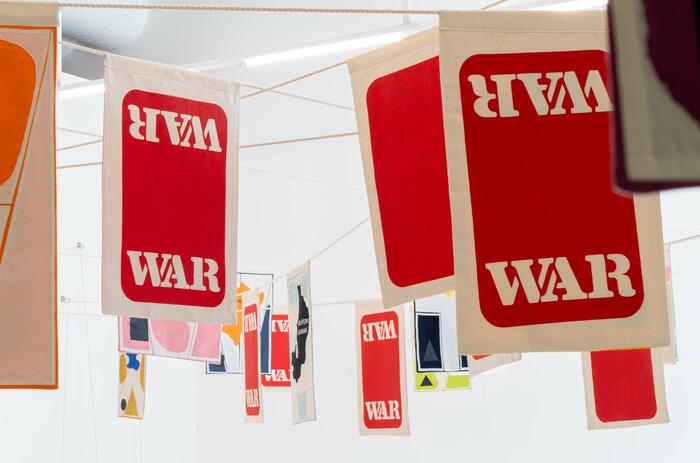
MAGIC LIGHTS, BOILING SURFACES - REBECA CARAPIÁ, PIPILOTTI RIST AND RIVANE NEUENSCHWANDER
Inhotim is presenting three new projects at the end of 2024, in which the protagonists are Rebeca Carapiá, Pipilotti Rist and Rivane Neuenschwander. Three very different strategies by names of different visibilities and generations, which help to forge a moment in the institution that seems more connected to the fascinating and special nature of the place, without leaving aside lively questions about the strange days we are living through.

IDENTITY AND HOME – ACCORDING TO SOL CALERO IN THE CA2M MUSEUM
Sol Calero (Caracas, Venezuela, 1982) uses the guanabana, a fruit endemic to Central America and the Caribbean, to symbolically instrumentalize the creation of a representation of the feelings of belonging, home, everyday life and stereotypes through the wide conquest of the spaces of the Museo Centro de Arte Dos de Mayo, transformed for the occasion into visual and popular references of a well-known and recognized Latin America.

DENOUNCEMENT AND ORIGIN IN TABITA REZAIRE
Nebulosa de la calabaza is the title of the first solo exhibition presented in Spain by Tabita Rezaire (Paris, France, 1989), an artist living in French Guiana. Renowned for her use of new media and multidisciplinarity to explore the relationship between contemporary worlds transited from technology and their relationship with the most ancestral and spiritual environment, the Guyanese-heritage artist focuses her production on activism from the perspective of denunciation from feminism and decolonization as key points.

THE OTHER FORMS OF ABSTRACTION IN LATIN AMERICA
The section dedicated to abstraction in the Strangers Everywhere / Stranieri Ouvunque exhibition at the Venice Biennale 2024 explores how artists from the Global South -particularly those from Latin America- pursued less rigorous forms, undulating lines and a vibrant color palette stemming from references of their own.
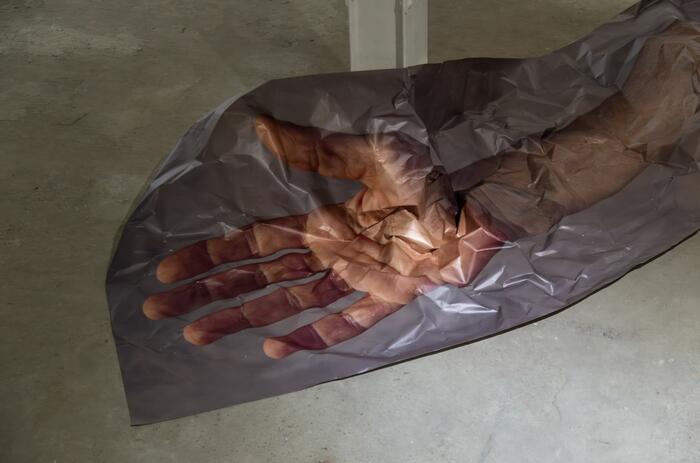
REPETITION AND TRANSFORMATION - SPECIAL PROJECT AT PINTA BAphoto
Cecilia Lenardón's Special Project at Pinta BAphoto, curated by Irene Gelfman, presents an installation that pushes the representation of the body through photography to the limit, transforming the static image into a living and performative experience. Entitled Cuatro piezas clave (Four Key Pieces), the work invites us to reflect on the body's boundaries and its capacity to tolerate effort and repetition.

WITNESSES OF AN EXTENDING TERRITORY - VIDEO PROJECT AT PINTA BAphoto
The eighth edition of Video Project, curated by Irene Gelfman, invites us to immerse in the concept of territory through the moving image. In video art we find a sense of curiosity and exploration that challenges our ideas of materiality and expands to embrace the most intimate. In six selected works, the notion of territory addresses bodies, landscapes and symbols, questioning the stability of physical and conceptual limits. The territory becomes a fluctuating space, as critical as the viewer's place.
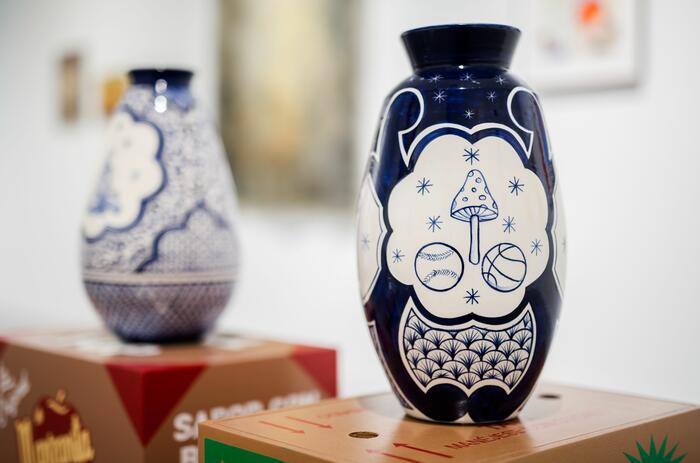
THE FIRE KEEPERS, A PERSPECTIVE ON THE MYTH OF FIRE FROM A MEXICAN CURATORIAL PERSPECTIVE
In an art industry that increasingly advocates following the lines established by cultural policies, it is always comforting to return to thesis themes, to environments that draw from social and historiographic sources, of course, but also from myths and a well-understood anthropology. You can go deeper in subtitles and lines or you can put together a skeleton, but the overview can also be a reward these days.
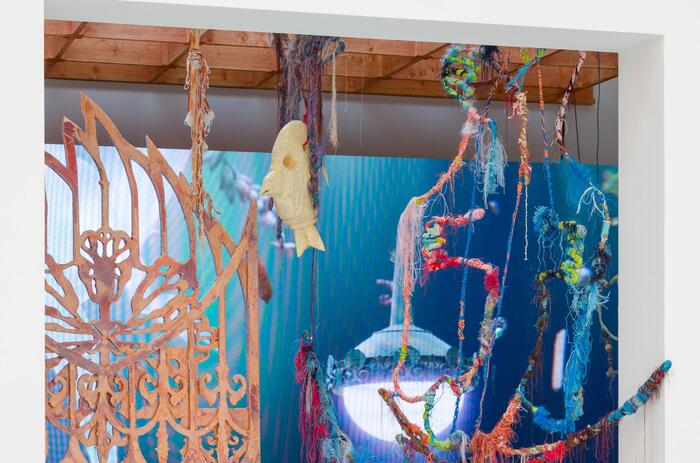
WATER, CYCLES AND TRANSFORMATION AT THE VENICE BIENNALE
The 2024 Venice Biennale has taken a profound interest on cyclical themes, with water emerging as a dominant motif across exhibitions. In resonance to Pedrosa’s title for this year ‘Stranieri Ovunque’, we see water as a dominant locus for the subjects of travel, shared heritage and fluctuation. On itself, water is seen (as both a vital resource and a destructive force) at the heart of the pavilions representing Greece, France, and in Otero Torres’ Arsenale installation, Aguacero. These exhibitions delve into water’s duality: as a life-giver and a potential destroyer, as a symbol of both division and connection.
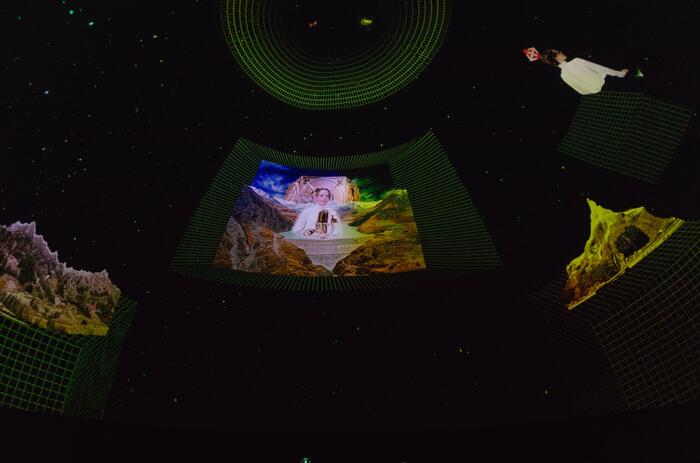
POSSIBLE FUTURES AT THE VENICE BIENNALE
The Venice Biennale 2024 offers an exceptional platform for examining the challenges and opportunities facing the future. The pavilions of Japan, Germany, Switzerland and Hungary trace different forms of looking at and thinking about the world to come, projecting visions of the environment, equilibrium, adaptation, world order and, of course, collective memory.

THE WANDERING STORIES OF CECILIA PAREDES, IN BLANCA BERLIN
From her different interdisciplinary perspectives, Cecilia Paredes (Lima, Peru, 1950) lands in Blanca Berlin with a collection of images that deal with imaginary cartographies, displacements and human relations in their conceptual part, materialized, above all, on canvas as the main exhibition material. In Historias errantes (Wandering Stories), the Peruvian artist bets on recovering graphic materials anchored in antiquity, such as astrological charts, engravings of discoveries and maps, which become, after the manipulation of the parts, absolute compositions of impossible -but also aesthetic- iconography.
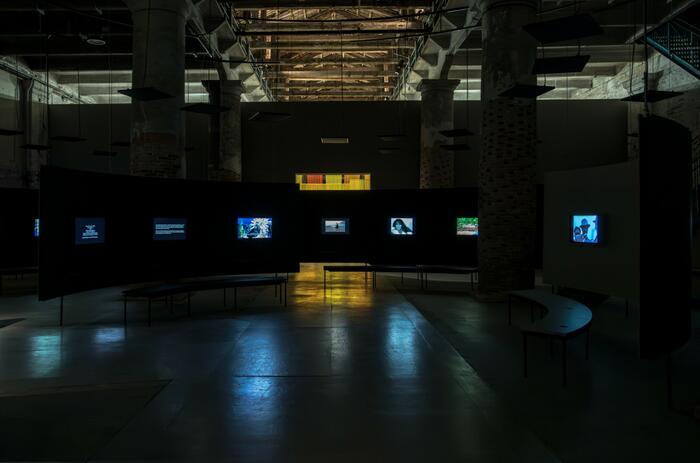
A GUIDE FOR PRACTICING DISOBEDIENCE
Disobedience Archive is a video archive project in constant transformation, linking artistic practices and political action. At the Venice Biennale exhibition, it takes the form of The Zoentrope, a pre-cinematographic machine that gives life to a space that generates new perspectives.

ALLEGRA PACHECO AND THE IMPACT OF THE LABOR ISSUE
There seems to be, and increasingly so, a constant and growing debate in the social sphere about labor relations and the impact of work on people. Almost absolute concepts in current narratives such as work-life balance or resilience lack the necessary background to create that conversation. However, in order to build precisely on them, the research being done on the impact and culture of work in this new revision that Postmodernity leads to value proposals such as the one Allegra Pacheco (San Jose, Costa Rica, 1986) lands in her conceptual Dear Salaryman, which in its latest evolution is exhibited at the Museo La Neomudéjar in Madrid.

HARMONY AND CHANCE IN HÉCTOR ZAMORA'S EMERGENCIA
Héctor Zamora (Mexico City, Mexico, 1974) navigates between opposing concepts. His particular interest in the incessant search, or in the eagerness of understanding, for conceptual equilibrium serves as an engine for a creative explosion in the search for that fragile space that results between actions and intentions, between should and being. In Emergencia, his first solo exhibition at Madrid's Albarrán Bourdais, the Mexican artist manages to capture in several dimensions that almost obsessive vocation of his personal struggle between the opposite poles that have been shaping his proposal.
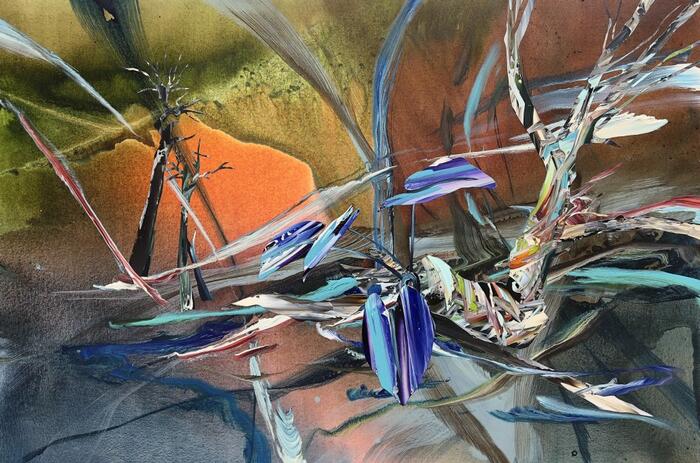
GERMÁN TAGLE'S REDEFINITION OF LANDSCAPE
Germán Tagle (Santiago, Chile, 1976) returns to Madrid's Daniel Cuevas, where he held his first exhibition two years ago, with El territorio portátil, a show in which the Chilean artist returns to the axes of landscape, painting and culture that have been the backbone of his latest productions.
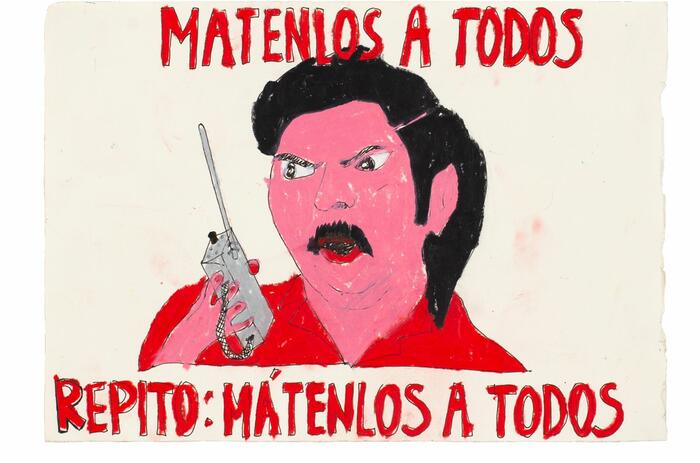
THE NARCO-HYPOPOTAMUSES’ TALE, BY CAMILO RESTREPO
The double problem that arose from the acquisition in the 1980s of several hippopotamuses in one of the many eccentricities of the trafficker Pablo Escóbar is the starting point of a fable that, between the tragic and the comic, Camilo Restrepo (Medellín, Colombia, 1975) has managed to weave with a very successful graphic and conceptual narrative. With Cocaine Hippos Sweat Blood, the spectator faces this surrealistic story from its beginnings to the present by the hand of a figurativism that sets aside the academic and the technical for the sake of a greater aesthetic and relational concordance with that of the madness transmitted by the story itself.
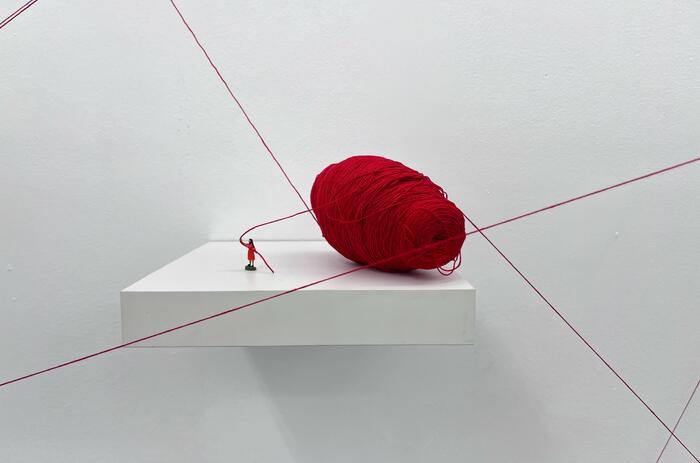
THE UNFINISHED STORIES OF LILIANA PORTER
Liliana Porter (Buenos Aires, Argentina, 1941) has a long history shared with Espacio Minimo. The Madrid gallery pampers every move and celebrates the extensive relationship with the Argentinean artist, always offering her the possibility of receiving her work and witnessing its evolution. For the opening of the space's season, the landing is called Otros cuentos inconclusos, a new proposal that deals with representation and two dimensional axes —space and time— that bear witness to many of the questions raised about human relations.
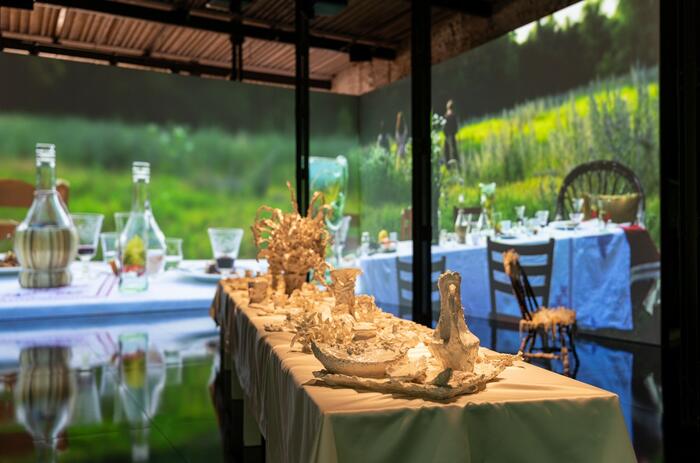
THE PATH OF MEMORIES – MEXICO AT THE BIENNALE
The Mexico Pavilion at the Venice Biennale 2024 proposes an immersive experience that invites the viewer to reflect on the act of migrating and its impact on identity and sense of belonging. As we marched away, we were always coming back is Erick Meyenberg's project curated by Tania Ragasol. It includes elements created in Mexico, Italy and Albania.

LUCIO FONTANA. IL Y A BIEN EU UN FUTUR - UN FUTURO C'É STATO
Lucio Fontana made one of the most extraordinary and radical gestures of modern art in 1958 when he cut the surface of a monochromatic canvas with a razor blade. The exhibition “Il y a eu un futur- Un Futuro c'é stato” at the Musée Soulage, Rodez, revisits the legacy of this artist and offers a survey of his entire oeuvre, before and after the war, in Argentina and Italy.
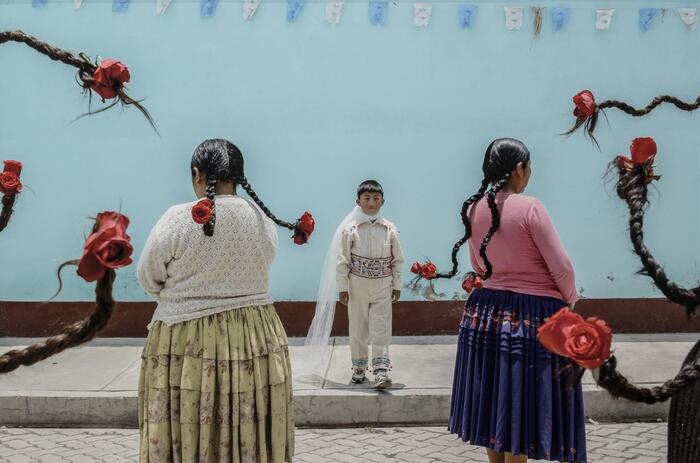
STORIES FROM THE SOUTH – THE VENICE BIENNALE TURNS AROUND ITS AXIS
Why highlight stories that often remain on the periphery of artistic discourse? Adriano Pedrosa justifies his curatorial decision with works by 331 artists -mostly from the global south- that open the way to powerful narratives. Finally, we see the axis being twisted. It is difficult to escape the white gaze, more so to move authentically through a Eurocentric space. Given this, the communicative reach of figuration serves to challenge the symbolic order of domination and destabilize the colonial project. The stories that are made explicit and the narratives of magic and everyday life help to recognize without revictimizing.

BODY INSIDE OUT - FRANCIS BACON, THE BEAUTY OF MEAT
A man is waiting. In elegant clothes, the figure is placed in the center of what looks like a hotel bar. He plays the lead role on a sort of stage, an interior that is something of a cage, something of a scenic locus, as if a possible flirtation or a desired encounter would provide some catalysis of emergence, a quick enjoyment, an intense release, however short and finite, perhaps dismantling a routine of limits. Man in Blue (1954) works as a synthesis of the not so extensive but very significant gathering of the celebrated Francis Bacon (1909-1992) in A Beleza da Carne (The Beauty of Meat), at Masp (São Paulo Museum of Art). The exhibition is curated by Adriano Pedrosa, artistic director of the institution and curator of the current edition of the Venice Biennale, the 60th, on show until November in the Italian city, and co-curated by Laura Cosendey.

FIVE LATIN AMERICAN ARTISTS EXHIBITING FOR THE FIRST TIME AT THE VENICE BIENNALE
The voices of Latin American artists emerge strongly in this 2024 edition of the Venice Biennale. Claudia Alarcón, Julia Isídrez and Juana Marta Rodas, Ana Segovia, Frieda Toranzo Jaeger and Claudia Andújar lead viewers on a profound journey through their cultural heritage and unique artistic practices.


